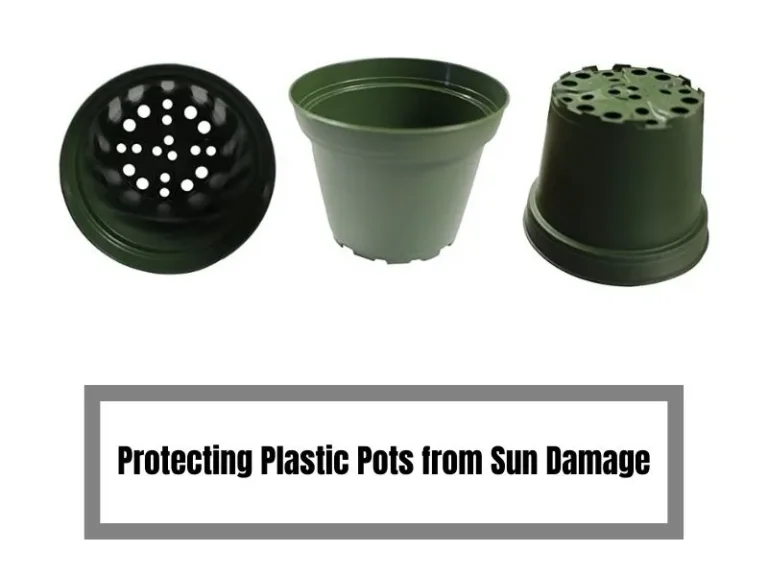Caring Climbing Jasmine in Pots: Master Guide for Flourishing Vines
From Louise: Passionate about gardening, I specialize in plant care and flower knowledge. I’m here to share my expertise and assist with your gardening queries. Feel free to ask any questions or seek advice on lawn care—I’ll respond within 24 hours!
If you’re looking for a way to add some beauty and fragrance to your outdoor space, climbing Jasmine is a great option. With its stunning blooms and delightful scent, growing climbing Jasmine in pots is an excellent way to add some greenery to your balcony, patio, or any other small space. But how do you care for this delicate plant?
In this article, you’ll learn expert tips and tricks on how to keep your climbing Jasmine healthy and thriving. From planting to pruning, watering, and fertilizing, we’ve got you covered. So, let’s dive in and turn your outdoor space into a fragrant oasis!
Key Takeaways
- Climbing Jasmine is a great option for adding beauty and fragrance to your outdoor space.
- Proper care is essential for keeping your climbing Jasmine healthy and thriving.
- From planting to pruning, watering, and fertilizing, expert tips and tricks can help you care for your climbing Jasmine.

Why Choose Climbing Jasmine for Pots?
Looking for a beautiful and fragrant plant to add to your balcony or terrace? Climbing Jasmine is a great choice! It can thrive in pots and containers, adding vertical interest to your outdoor space.
Plus, it’s versatile and comes in many popular varieties such as Jasminum polyanthum, Jasminum sambac, and Jasminum officinale.
How to Care for a Climbing Jasmine in Pots
If you’re looking to add a fragrant and visually appealing touch to your garden, growing climbing jasmine in pots is a fantastic option.
These plants produce beautiful flowers with a sweet aroma and can climb up trellises, fences, walls, and pergolas, adding a vertical element to your garden. However, taking care of a climbing jasmine in pots requires some effort and attention. Here’s what you need to know.
Choosing the Right Pot
Choosing the right pot is crucial for the health of your jasmine plant. A pot that is at least 12 inches in diameter is ideal for a climbing jasmine, and you should be prepared to upgrade as your plant grows.
Ensure that the pot has good drainage to prevent waterlogged roots. Plastic, clay, and ceramic pots all have their pros and cons, so choose the one that suits your needs best.
Soil and Fertilizer
The soil is the foundation of your plant’s health. Jasmine prefers well-draining soil, and a mix of equal parts potting soil, peat moss, and perlite is ideal for your plant’s growth.
Feed your jasmine with a balanced fertilizer during the growing season, with a frequency of once every two weeks.
Watering
Watering your jasmine plant is both an art and a science. Jasmine likes moist soil, but not waterlogged roots.
Water your plant when the top inch of soil feels dry, and keep an eye out for signs of overwatering or underwatering. In summer, your jasmine will require more water, while in winter, you should cut back on watering.
Sunlight and Temperature Requirements
Jasmine plants require bright, indirect light, and a temperature range between 60°F and 75°F.
Too much or too little sunlight can harm your plant, so ensure that it is in a spot that receives the right amount of light. Keep your plant away from drafts and extreme temperatures.
Pruning and Training
Pruning and training your climbing jasmine is essential to maintain its shape and encourage bushier growth.
Prune after flowering using sharp and clean tools. You can train your jasmine to climb by using supports and ties, making it a fun project with a beautiful outcome.
Related Posts: Training Jasmine on a Wooden Fence: A Step-by-Step Guide
Types of Climbing Jasmine
Climbing jasmine comes in several popular varieties, each with its unique characteristics and benefits. Here are a few options to consider:
- Jasminum polyanthum: This tender variety is known for its fast growth and produces fragrant pink or white flowers.
- Trachelospermum jasminoides: Also known as star jasmine, this hardy plant is a popular choice for trellises and walls and produces fragrant white flowers.
- Jasminum officinale: Commonly known as white jasmine, this hardy plant can be trained to grow in a variety of shapes and produces fragrant white flowers.
- Jasminum nudiflorum: This hardy plant produces yellow flowers in the winter and is a great choice for adding color to your outdoor space during the colder months.
No matter which variety you choose, climbing jasmine is sure to add beauty and fragrance to your outdoor space. With proper care and attention, this plant can thrive in pots and containers, providing you with years of enjoyment.
Related Posts:
- Jasminum Multipartitum: A Guide to Growing and Caring for this Unique Plant
- Discover the Beauty of Jasminum Abyssinicum: Care Tips, Pests, and More
- Discover the World of Jasminum Grandiflorum: Fragrance and Beauty of Jasmine Flowers
Repotting Climbing Jasmine
When your climbing jasmine’s roots start to peek out of the drainage holes, it’s time to repot. Choose a pot one size larger than the current one and fill it with well-draining soil.
Gently remove the plant from the old pot and loosen the root ball. Place the plant in the new pot and fill with soil. Water thoroughly. Be gentle to avoid shocking your plant friend.
Winter Care
During the winter, your climbing jasmine will go dormant and require less water and fertilizer. Reduce watering to once a week and stop fertilizing altogether. If you’re growing your plant indoors, make sure it gets enough sunlight and warmth to survive the winter.
To protect your climbing jasmine from the cold, wrap the pot with bubble wrap or burlap. You can also move it to a warmer location, such as a garage or basement.
Remember to check the soil moisture level regularly and adjust watering as needed. Too much water can cause root rot, while too little water can cause the plant to dry out.
Common Problems and Solutions
Even the toughest jasmine plants face challenges, and pests like aphids and red spider mites might stop by uninvited. Keep your eyes open and tackle any issues ASAP. Prevention is better than cure.
For more information on identifying and treating common issues with jasmine plants, check out this article.
FAQs
How often should I water my climbing jasmine in a pot?
Watering your climbing jasmine in a pot can be tricky. You want to make sure you are giving it enough water without overwatering it. A good rule of thumb is to water your jasmine when the top inch of soil feels dry to the touch. During the hot summer months, you may need to water your jasmine more frequently. But be careful not to let the soil become waterlogged, as this can lead to root rot.
Can I grow climbing jasmine indoors?
Yes, you can grow climbing jasmine indoors! Jasmine plants are great for adding a touch of greenery to your home. Just make sure your jasmine plant gets plenty of sunlight and is in a well-draining pot. You may also want to consider using a trellis or garden twine to help your jasmine climb and stay tidy.
When should I prune my climbing jasmine?
Pruning your climbing jasmine is important for maintaining its shape and encouraging new growth. You should prune your jasmine plant in the late winter or early spring before new growth appears. Remove any dead or damaged branches, and trim back any overgrown branches to promote a bushier, more compact plant.
Why is my climbing jasmine not blooming?
If your climbing jasmine is not blooming, it could be due to a few different factors. First, make sure your plant is getting enough sunlight. Jasmine plants need at least 6 hours of direct sunlight each day to bloom. You may also need to fertilize your plant with a balanced fertilizer to encourage blooming. Finally, make sure you are not over-pruning your jasmine plant, as this can remove the buds that will eventually become flowers.
How do I train my climbing jasmine to climb a trellis?
Training your climbing jasmine to climb a trellis is easy! Simply tie the stems of your jasmine plant to the trellis using garden twine. As your plant grows, continue to tie the stems to the trellis to encourage upward growth. You may also want to trim back any branches that are not growing in the direction you want them to.
How do I prevent aphids on my climbing jasmine?
Aphids can be a common problem for jasmine plants. To prevent aphids, make sure your plant is getting enough sunlight and is not over-watered. You can also try using an insecticidal soap or neem oil to control aphids. If you notice a large infestation, you may need to prune back the affected branches or use a stronger insecticide.
Conclusion
In conclusion, growing climbing jasmine in a pot can be a rewarding experience as long as you provide it with proper care. Remember to keep the soil moist but not soggy, and fertilize your plant every few weeks during the growing season.
Place your pot in a bright spot, but out of direct sunlight, and consider using a saucer to catch excess water. With the right care, your jasmine plant can flourish and become a beautiful and fragrant addition to your home or garden.
If you’re interested in learning more about growing and caring for jasmine plants, there are many resources available online. Check out our related posts for more information
Related Posts:
- Training Jasmine on a Wooden Fence: A Step-by-Step Guide
- How to Propagate Star Jasmine from Cuttings: A Comprehensive Guide
- Easy Ways to Propagate Jasmine Without Rooting Hormone
- Jasmine Trachelospermum Problems: Recognizing and Solving Common Issues
- Is Star Jasmine Poisonous to Humans? What You Need to Know






